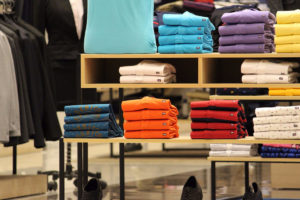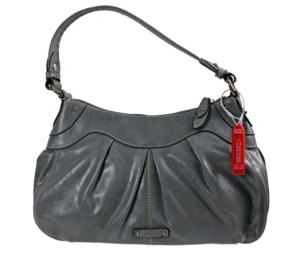 December is the month when retailers are focused on driving those end of the year sales. We push as much merchandise as possible out of the stockrooms to fill the floors. Empty salesfloor spaces should be “no-no’s” during this time of the year. We re-merchandise our fixtures to get gift ideas in front of our customers. We also take steps to increase impulse buys by filling check lanes with snacks, batteries, magazines, gift cards, etc. Managers should also be looking at last year sales information to plan schedules around peak times of the day in order to avoid long lines at the registers. While all of this is important it is just as important to start planning for your end of the year wrap up.
December is the month when retailers are focused on driving those end of the year sales. We push as much merchandise as possible out of the stockrooms to fill the floors. Empty salesfloor spaces should be “no-no’s” during this time of the year. We re-merchandise our fixtures to get gift ideas in front of our customers. We also take steps to increase impulse buys by filling check lanes with snacks, batteries, magazines, gift cards, etc. Managers should also be looking at last year sales information to plan schedules around peak times of the day in order to avoid long lines at the registers. While all of this is important it is just as important to start planning for your end of the year wrap up.
Much of December into January is the same as the rest of the year but there are some differences that need to be considered. It is the end of the year and that means you will have to consider inventory will be coming up in the next few months (depending on when you take inventory of course). Even if you take your inventory later in the year you should still be thinking about it and starting to prepare now. As your team is pushing merchandise out of the stockroom it should be emptying out. It is the perfect time to look for merchandise that has fallen from hangers or dropped into a nook or cranny that is usually hard to see. Scouring the building for merchandise that has been hidden away is another step to be taken. Sometimes customers will hide merchandise intending to come back for it later or employees may do so to avoid re-stocking it. Merchandise may also be under base decks or fall behind registers and regardless of how it gets there, it will result in shortage if not accounted for at inventory time.
You may have hired seasonal employees for the holidays. You will need to start making decisions on who you will release and who you may decide to keep on your staff. If you have other managers working for you seek their input. It is not uncommon for us to have a skewed view of what an employee’s work and productivity may be. You may see someone occasionally and think they are performing well. You then speak with their immediate supervisor and find out this employee is really a problem to their work center. Decisions must be made as to when cuts will be made and offers of permanent employment provided. Whether you like the employee or not it is only fair to give them time to start looking for other work or have the knowledge they won’t need to do so.
Review any vendor supplied items your store may carry. Are vendors maintaining their products and filling their allocated space? Conduct spot audits of vendor merchandise and make sure if there are products soon to expire they are on the front of the shelf. Be diligent that you are receiving the appropriate credits for merchandise the vendor is removing from your store. You or a delegated manager should look at vendor credits to be sure they are being given to you in a timely manner now and through the entire year.
The end of the year is also the time to look at building maintenance issues. Parking lot lighting, exterior lights, fire, and burglary alarm tests should have all been done at the start of the 4th quarter. Now is the time to look for facility problems, are restroom sinks and toilets operating correctly? Are there any roof leaks that have not been previously reported? Are fitting room doors opening, closing and locking? Some repairs may be a landlord’s responsibility to cover, be sure those are reported and taken care of.
Finally, as you wrap up your year take time to celebrate your wins with your team and also take a look at opportunities for improvement. Make it a group effort and give everyone a chance to comment on what they thought went well and what could have gone better. Getting everyone’s insight can be enlightening and provide ideas for making the coming year even better than this year and that is how businesses stay successful.
 A New Year is just around the corner and once again resolutions are going to be made and many of those will fall by the wayside. Why does that happen? Are goals too big to achieve? Sometimes we all start off with good intentions and we just get caught up in our normal routines and we can’t seem to focus on what it was we wanted to get done. There may be a manager out there who resolves that this is the year they will meet quarterly with each employee and discuss performance. They might do well the first quarter but then as the demands of the job take up more and more time something gives and it was the meetings. I recall one of my resolutions was to be more organized at work. I had a filing system, it was called my desktop and I knew where everything was at. I would make my resolution, create a filing system and you guessed it by the end of January I was back to my old habits. My intentions were good I just wouldn’t stay focused on it and made excuses.
A New Year is just around the corner and once again resolutions are going to be made and many of those will fall by the wayside. Why does that happen? Are goals too big to achieve? Sometimes we all start off with good intentions and we just get caught up in our normal routines and we can’t seem to focus on what it was we wanted to get done. There may be a manager out there who resolves that this is the year they will meet quarterly with each employee and discuss performance. They might do well the first quarter but then as the demands of the job take up more and more time something gives and it was the meetings. I recall one of my resolutions was to be more organized at work. I had a filing system, it was called my desktop and I knew where everything was at. I would make my resolution, create a filing system and you guessed it by the end of January I was back to my old habits. My intentions were good I just wouldn’t stay focused on it and made excuses.
 As a manager of a retail shop, the layout of the store is probably out of your hands and there is nothing to do about it.
As a manager of a retail shop, the layout of the store is probably out of your hands and there is nothing to do about it. Kleptomania is a mental disorder. Not as serious as a more severe case of schizophrenia for example, but a mental disorder nonetheless. The inability of people suffering from this disorder to stop themselves from grabbing merchandise and stealing it is a problem mental health professionals try to understand and help these sufferers find a way to overcome.
Kleptomania is a mental disorder. Not as serious as a more severe case of schizophrenia for example, but a mental disorder nonetheless. The inability of people suffering from this disorder to stop themselves from grabbing merchandise and stealing it is a problem mental health professionals try to understand and help these sufferers find a way to overcome. As the biggest shopping season of the year seems inevitable close, retailers across the world prepare themselves to not only have a great holiday season but a profitable one.
As the biggest shopping season of the year seems inevitable close, retailers across the world prepare themselves to not only have a great holiday season but a profitable one. You know the drill. At the end of the day, you find your merchandise tags on the floor or hidden in your fitting rooms. Shoplifters bring your merchandise into a fitting room and put it on under their clothes. Sometimes many layers of your apparel are under the clothes they wore in.
You know the drill. At the end of the day, you find your merchandise tags on the floor or hidden in your fitting rooms. Shoplifters bring your merchandise into a fitting room and put it on under their clothes. Sometimes many layers of your apparel are under the clothes they wore in. I wonder if Santa Clause conducts background checks on his newly hired elves? I’ve been contemplating the chaos that would take place in Santa’s workshop if he just hired any old elf to work for him. Does Santa ever get into a time crunch right around June and bring in seasonal hires to help meet timelines to get all of the toys made? Imagine the pilferage that would ensue if Santa’s Helpers haven’t been properly screened for criminal activity before being brought on board. Defective dolls might be delivered to darling little girls who deserve better. No firetrucks for a little fella because a fiendish elf stole it.
I wonder if Santa Clause conducts background checks on his newly hired elves? I’ve been contemplating the chaos that would take place in Santa’s workshop if he just hired any old elf to work for him. Does Santa ever get into a time crunch right around June and bring in seasonal hires to help meet timelines to get all of the toys made? Imagine the pilferage that would ensue if Santa’s Helpers haven’t been properly screened for criminal activity before being brought on board. Defective dolls might be delivered to darling little girls who deserve better. No firetrucks for a little fella because a fiendish elf stole it. When we think of gift boxes and wraps during this time of the year we would probably think of robe boxes, shirt boxes or jewelry boxes. Wraps would bring to mind those colorful papers and foils that we use to hide the boxes and try to camouflage the gifts inside. Then there are the ribbons that tie everything together and make the packages beautiful. The whole purpose is to protect the items we have purchased from prying eyes and snoops.
When we think of gift boxes and wraps during this time of the year we would probably think of robe boxes, shirt boxes or jewelry boxes. Wraps would bring to mind those colorful papers and foils that we use to hide the boxes and try to camouflage the gifts inside. Then there are the ribbons that tie everything together and make the packages beautiful. The whole purpose is to protect the items we have purchased from prying eyes and snoops. “Dashing through the snow in a one-horse open sleigh…” OH BOY, this is one of my favorite times of the year! Christmas time and the other holidays just make it special for me. The television specials, the music, the foods and treats and the decorations all combine to just give a warm feeling. I even feel like people tend to be friendlier and more helpful to each other. Then there is the shopping to do, going out to window shop or find that perfect gift for someone(s) special in our lives. Living in the South we don’t often get to dash through the snow but when you live up in the northern states you can add the winter frolicking to your holidays. Even if we haven’t experienced it almost all of us have seen pictures or movies with reindeer dashing through the snow pulling Santa’s sleigh. There’s something about it that evokes a bit of childhood magic.
“Dashing through the snow in a one-horse open sleigh…” OH BOY, this is one of my favorite times of the year! Christmas time and the other holidays just make it special for me. The television specials, the music, the foods and treats and the decorations all combine to just give a warm feeling. I even feel like people tend to be friendlier and more helpful to each other. Then there is the shopping to do, going out to window shop or find that perfect gift for someone(s) special in our lives. Living in the South we don’t often get to dash through the snow but when you live up in the northern states you can add the winter frolicking to your holidays. Even if we haven’t experienced it almost all of us have seen pictures or movies with reindeer dashing through the snow pulling Santa’s sleigh. There’s something about it that evokes a bit of childhood magic.